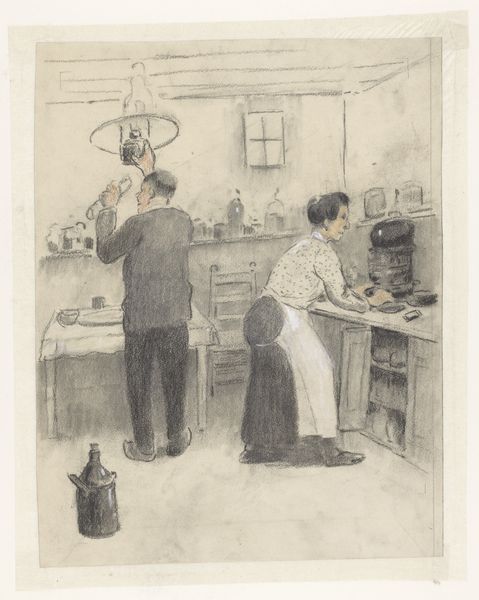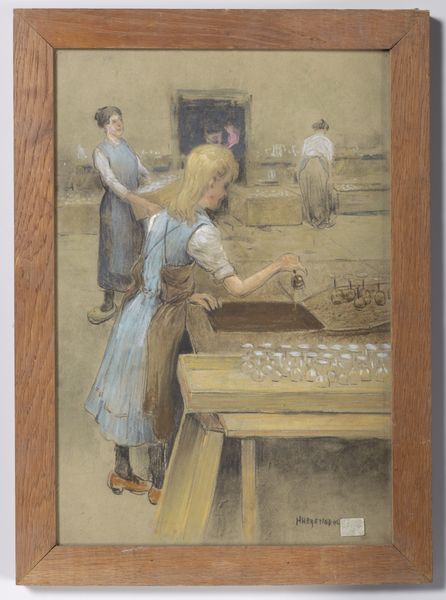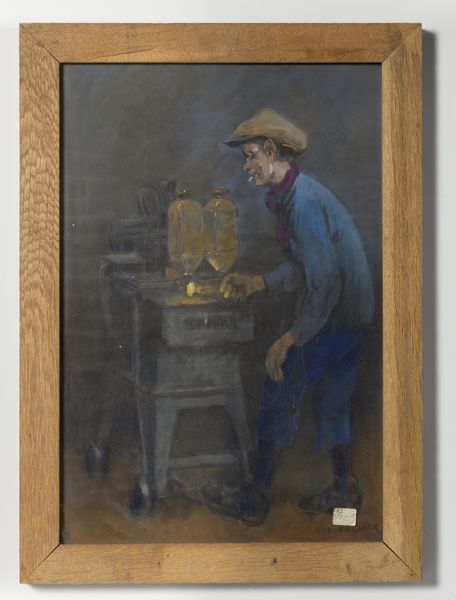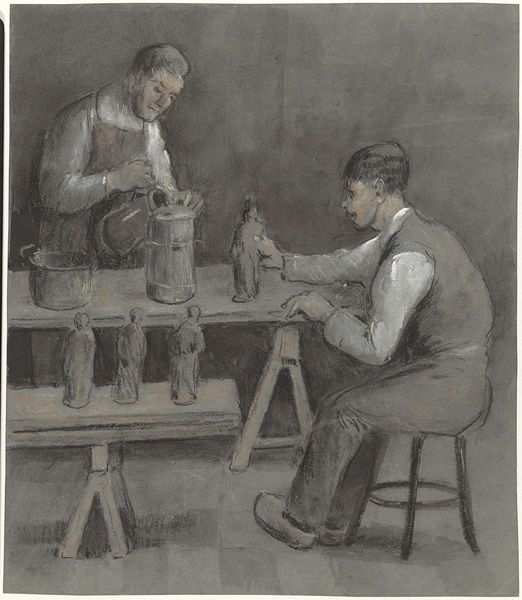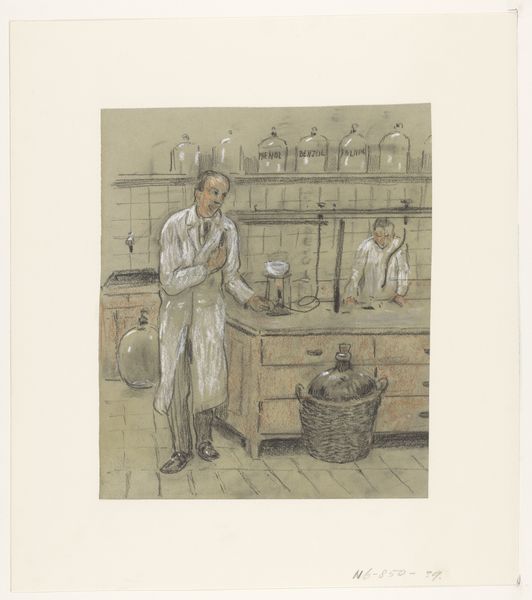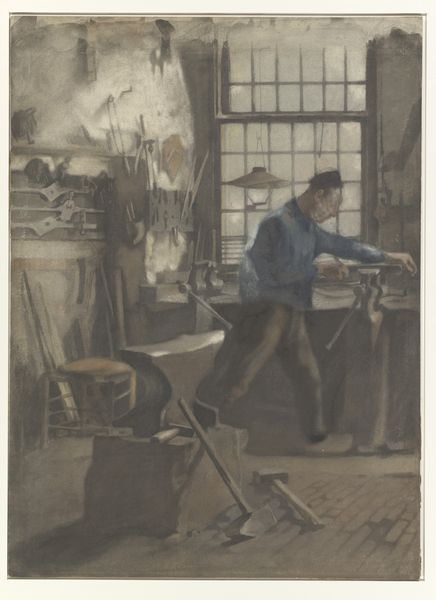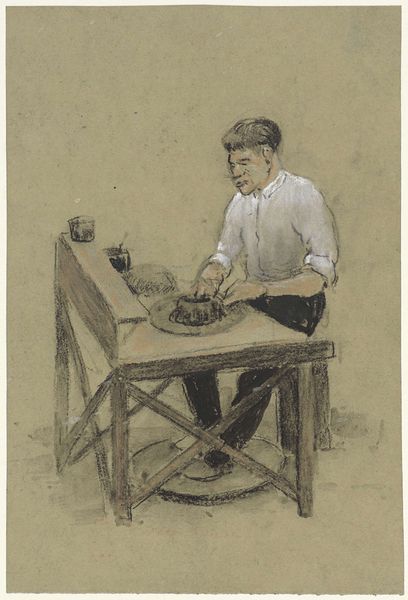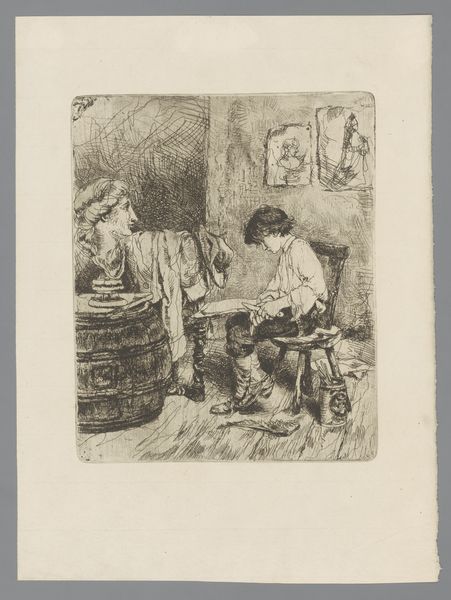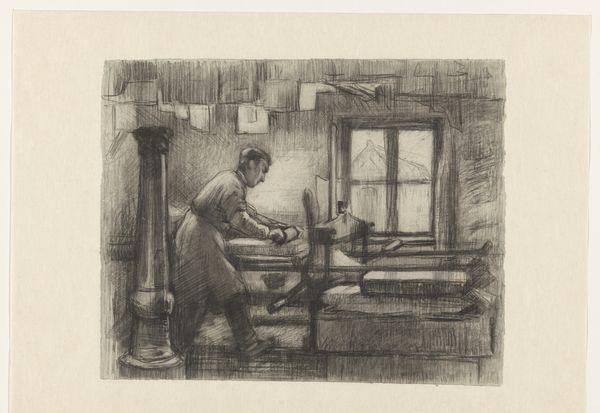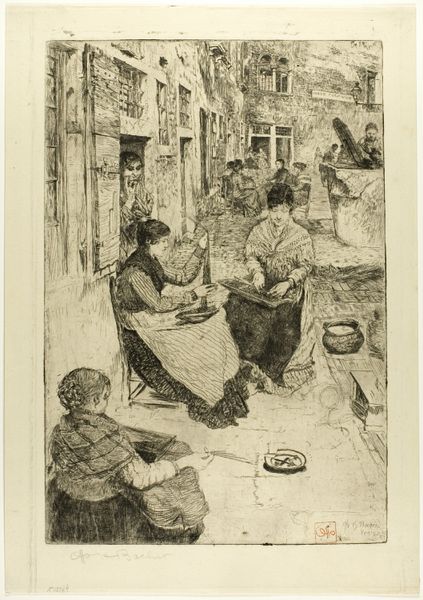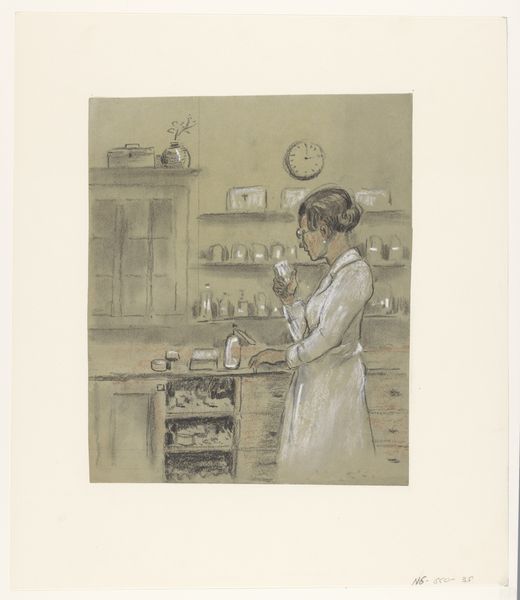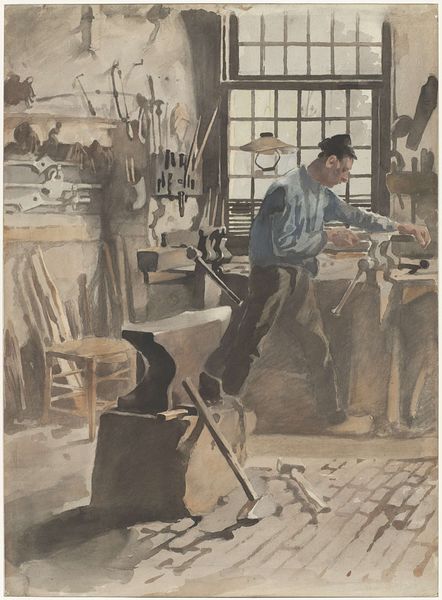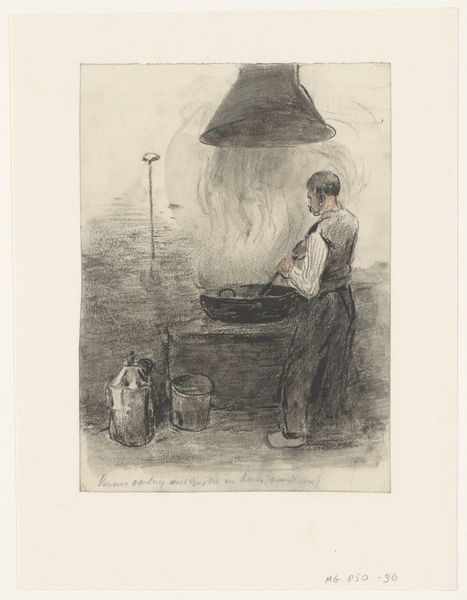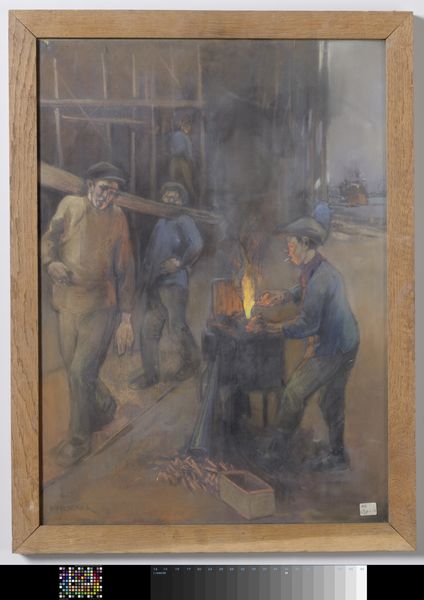
drawing, watercolor
#
drawing
#
figuration
#
watercolor
#
genre-painting
#
modernism
#
watercolor
Dimensions: height 56 cm, width 45.7 cm, height 71 cm, width 53 cm, depth 2 cm
Copyright: Rijks Museum: Open Domain
Editor: This watercolor and drawing by Herman Heijenbrock, "De glasfabriek te Leerdam: vlakslijpen," likely created between 1900 and 1930, feels remarkably grounded in the everyday. The composition almost romanticizes the industrial scene. What story do you see unfolding here? Curator: This piece offers a window into the changing role of labor at the turn of the century. Genre paintings such as these were being consumed by the wealthy who at the time began viewing such factory production scenes through an aesthetically attractive lens. In this historical moment of industrial boom and growing disparity, Heijenbrock normalizes industrial progress and social stratifications, rather than taking a critical position on labor inequities. Editor: I can see that. So the artistic choice is a direct response, almost an endorsement, of the contemporary sociopolitical narrative? Curator: Precisely. And look at the figures; are they idealized or realistically rendered? Editor: More realistic, I think. There is no visible drama but there are men engaged in hard work. Curator: The drawing is documentary, evidencing the mechanization of glass production and celebrates human efficiency in factories like this one. This artistic choice subtly influences the viewer’s interpretation. It emphasizes the progress and glosses over human costs associated with mass production, therefore serving particular narratives within Dutch society during this time. Editor: It is amazing how much the image says about the cultural priorities of the time it was created. It gives a very nuanced reading into the values of early twentieth-century Dutch society. Thank you! Curator: My pleasure! It shows us how art acts not just as reflection but as a participant in socio-political dialogues.
Comments
No comments
Be the first to comment and join the conversation on the ultimate creative platform.
